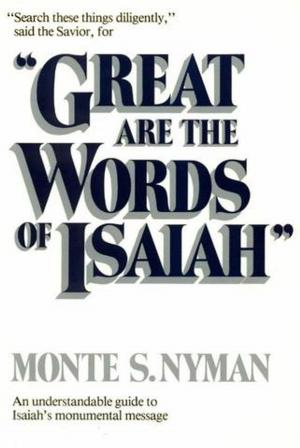Warfare in Mesoamerica: Battles in the Book of Mormon
Nonfiction, Religion & Spirituality, Christianity, Denominations, Mormonism| Author: | John Kammeyer | ISBN: | 9781452467832 |
| Publisher: | John Kammeyer | Publication: | April 13, 2012 |
| Imprint: | Smashwords Edition | Language: | English |
| Author: | John Kammeyer |
| ISBN: | 9781452467832 |
| Publisher: | John Kammeyer |
| Publication: | April 13, 2012 |
| Imprint: | Smashwords Edition |
| Language: | English |
Book of Mormon warfare can be defined on about three levels, from general to specific:
—It’s real warfare, as experienced by real people and recorded by a professional military observer.
—It’s real Iron Age warfare, based on technology and tactics.
—It’s real Mesoamerican warfare, based on cultural details in the text, modified by a heavy Old Testament influence on the Nephites.
We begin to Book of Mormon military commanders on a human level; not as giants bestriding the earth, but as humans coping with shifting and unpredictable circumstances. They were men, and had the strength of men; sometimes their leadership was really good, sometimes rather indifferent. Moroni was a brilliant soldier, but he couldn’t be everywhere, nor control everything around him; nor did all of his plans pan out. Nothing is foolproof. We see in the Book of Mormon Clausewitz’s trinity of chance, rationality and raw emotion, and also see the interface between the people, the government and the military. It’s all completely realistic.
This book focuses on the half-dozen most important commanders in the Book of Mormon. We study their options, and the decisions based on those options, and the consequences of these choices.
Gideon, Alma the Younger, Moroni, Helaman, Gidgiddoni, Mormon. What makes them unique in the history of warfare? Why did Mormon focus on these men? Because they were men of God. While they were experienced and well trained, Nephite commanders were as prone to mistakes as any mortals and apt to get lost in the fog of war. What makes them different are the elements of faith, and revelation, the seamless fusion of the spiritual with the temporal. We begin to see that a righteous people can never be completely or permanently defeated.
Book of Mormon warfare can be defined on about three levels, from general to specific:
—It’s real warfare, as experienced by real people and recorded by a professional military observer.
—It’s real Iron Age warfare, based on technology and tactics.
—It’s real Mesoamerican warfare, based on cultural details in the text, modified by a heavy Old Testament influence on the Nephites.
We begin to Book of Mormon military commanders on a human level; not as giants bestriding the earth, but as humans coping with shifting and unpredictable circumstances. They were men, and had the strength of men; sometimes their leadership was really good, sometimes rather indifferent. Moroni was a brilliant soldier, but he couldn’t be everywhere, nor control everything around him; nor did all of his plans pan out. Nothing is foolproof. We see in the Book of Mormon Clausewitz’s trinity of chance, rationality and raw emotion, and also see the interface between the people, the government and the military. It’s all completely realistic.
This book focuses on the half-dozen most important commanders in the Book of Mormon. We study their options, and the decisions based on those options, and the consequences of these choices.
Gideon, Alma the Younger, Moroni, Helaman, Gidgiddoni, Mormon. What makes them unique in the history of warfare? Why did Mormon focus on these men? Because they were men of God. While they were experienced and well trained, Nephite commanders were as prone to mistakes as any mortals and apt to get lost in the fog of war. What makes them different are the elements of faith, and revelation, the seamless fusion of the spiritual with the temporal. We begin to see that a righteous people can never be completely or permanently defeated.















